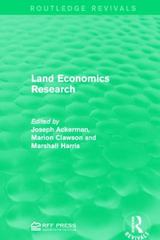Question
1.In a remote valley, two businesses share a waterway.Tom's Tomato Farm pumps water from a river and uses it to irrigate its fields.The used water
1.In a remote valley, two businesses share a waterway.Tom's Tomato Farm pumps water from a river and uses it to irrigate its fields.The used water eventually flows back into the river, carrying some of the fertilizer that Tom applies to his crops.Up to a point, more fertilizer helps increase Tom's harvest.Downstream, Jay's Riverview Campground offers campsites to interested vacationers.Fertilizer contamination of the river creates algae blooms that adversely affect Jay's business. The functions describing the profits of each establishment are:
where the subscripts "T" and "J" refer to Tom's and Jay's places of business, respectively."F" represents the amount of fertilizer in the river generated by Tom.
(a)Derive the functions representing (i) the marginal benefit of fertilizer to Tom and (ii) the marginal cost of fertilizer to Jay.
Marginal Benefit for Tom = 12 - 0.5F
Marginal Benefit for Jay = -8 and therefore, the Marginal Cost would equal 8.
(b)Suppose that the existing law defines property rights that favor recreational users of waterways (e.g., campsites) at the expense of farmers.A campsite can sue a polluting farmer for prohibitive damages if any pollution takes place, unless the affected parties consent to an alternative agreement.Indicate (i) the amount of pollution that takes place in this scenario, and (ii) the profits of Tom and Jay.Assume that Jay has all the bargaining power (i.e., he captures the entire Coasian bargaining surplus, note it is different from the classroom example where both parties have some bargaining surplus).
(c)There exists a containment process for recapturing irrigation water in underground troughs and cleansing it of any leached fertilizer contaminants.This technology, which can be purchased for a cost of $X, would prevent Tom's operations from polluting the river at all (regardless of his choice of F).Suppose property rights and bargaining power are defined as in (b).What is the most Tom would be willing to pay to obtain this new process?
Step by Step Solution
There are 3 Steps involved in it
Step: 1

Get Instant Access to Expert-Tailored Solutions
See step-by-step solutions with expert insights and AI powered tools for academic success
Step: 2

Step: 3

Ace Your Homework with AI
Get the answers you need in no time with our AI-driven, step-by-step assistance
Get Started


